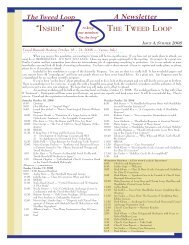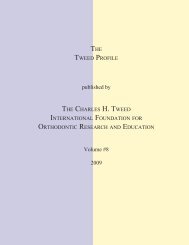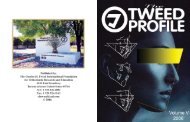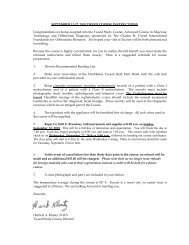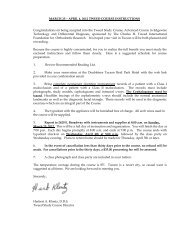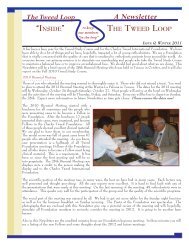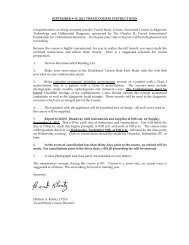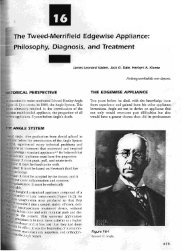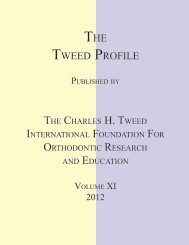the tweed profile - The Charles H. Tweed International Foundation
the tweed profile - The Charles H. Tweed International Foundation
the tweed profile - The Charles H. Tweed International Foundation
You also want an ePaper? Increase the reach of your titles
YUMPU automatically turns print PDFs into web optimized ePapers that Google loves.
<strong>The</strong> panoramic X-ray (Fig 3) shows no pathology. <strong>The</strong> third<br />
molars are present. <strong>The</strong> pretreatment cephalometric tracing<br />
(Fig 4) shows an ANB of 8°and an AO-BO of 4mm—a reflection<br />
of <strong>the</strong> class II problem. <strong>The</strong> FMA is a normal 27°,<br />
but an IMPA of 117°and FMIA 36° indicate severe dental<br />
protrusion. <strong>The</strong> 49°Z angle also reflects <strong>the</strong> facial protrusion.<br />
Total space analysis was 44.8mm. <strong>The</strong> total difficulty was<br />
136.8.<br />
Fig 5<br />
Fig 3<br />
Fig 6<br />
Fig 4<br />
To correct <strong>the</strong> open bite and <strong>the</strong> protrusion, four first premolars<br />
were extracted. Even after first premolars were removed,<br />
a space deficit existed due to <strong>the</strong> class II correction<br />
requirement. <strong>The</strong>refore, it was necessary to study <strong>the</strong> posterior<br />
denture area. <strong>The</strong> mandibular third molars were extracted<br />
so that maximum anchorage could be prepared during<br />
treatment. After maxillary space closure and mandibular<br />
anchorage preparation <strong>the</strong> malocclusion was re-evaluated.<br />
For patients with an end on or a full step class II relationship<br />
of <strong>the</strong> buccal segment, a new system of forces must be used<br />
to complete denture correction. It is necessary to make a final<br />
diagnostic decision for class II correction based on 1) <strong>the</strong><br />
ANB relationship, 2) a maxillary posterior space analysis,<br />
and 3) patient cooperation. <strong>The</strong> maxillary second molars<br />
were extracted for this patient to provide space for maxillary<br />
posterior distal tooth movement. <strong>The</strong> total active treatment<br />
time was 39 months.<br />
<strong>The</strong> posttreatment facial photographs (Fig 5) show a dramatic<br />
facial change and a favorable smile line.<br />
<strong>The</strong> posttreatment intraoral photographs (Fig 6) show <strong>the</strong><br />
class I interdigitation of <strong>the</strong> buccal segments and <strong>the</strong> openbite<br />
correction.<br />
Fig 8<br />
Fig 7<br />
<strong>The</strong> posttreatment cephalometric tracing (Fig 7) confirms<br />
that <strong>the</strong> mandibular incisors were uplighted since <strong>the</strong> FMIA<br />
increased from 36.0° to 56.0°. <strong>The</strong> Z angle improved from<br />
49.0° to 64.0°.<br />
52



